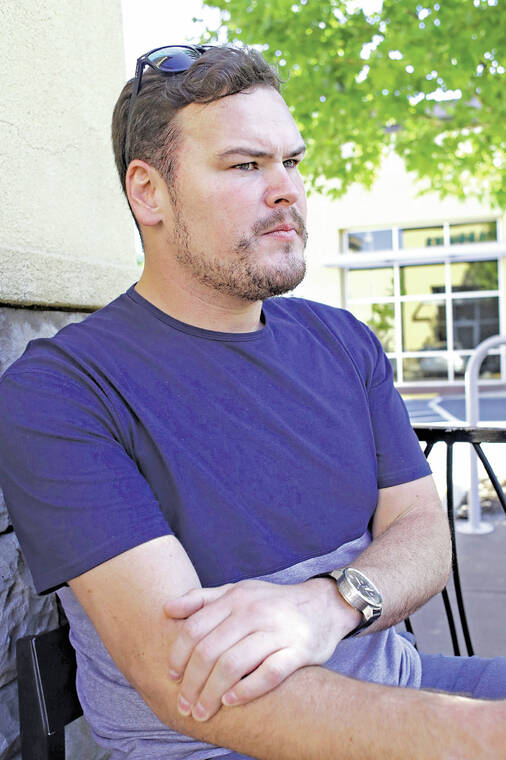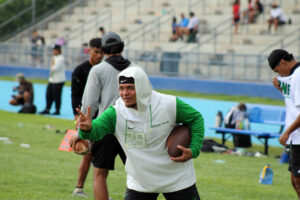Pride Progress? As gay pro athletes consider coming out, each announcement makes a mark


It was never Jason Collins’ intention to be a spokesperson or leader of a cause. He just wanted to live a life that was open and honest, one untangled from the excuses and dodges that are often in the playbook when you are concealing your sexual identity.
But when you emerge as the first active, out gay player in NBA history, as Collins did in 2013, you can’t not be a spokesperson. One of the constants in the evolution of the out gay athlete in the major North American men’s professional sports leagues is that everyone who comes out is providing a blueprint for those who dare to be next.
ADVERTISING
It is different in women’s professional sports, where there is a well-chronicled history of out players and generally high support from the leagues and their fans. In the men’s leagues, progress has been slow and tentative. So, yes, Collins shares his experiences. His words are important. His story is important.
But the timing for this interview wasn’t good. Collins and his longtime partner, Brunson Green, were to be married in two weeks — Memorial Day weekend — and there was still so much to do. Is the tent all set? The food? The music?
“And all that other stuff that goes into having a fun and enjoyable weekend,” Collins said, speaking on the phone from Austin, Texas. “I would have called earlier, but I was going over the wedding playlist.”
And then, just like that, something happened that revealed a subtle difference between being closeted and being comfortably out. When the conversation shifted to the wedding, Collins, 46, was asked if his college roommate from Stanford University, Joe Kennedy, a former Congress member from Massachusetts, would be in attendance.
“I think Joe’s coming,” Collins said. Then, speaking not into the phone but to somebody else, he said, “Brunce, are Joe and Lauren coming to the wedding?”
Had Collins been doing a phone interview during his early years in the NBA — he broke in with the New Jersey Nets in 2001 — he might have thought twice about such an exchange. The guardrails would have been up, as they are for many closeted men.
But it is 2025, some 12 years after Collins, who was technically a free agent, came out in an essay he wrote for Sports Illustrated. (He reemerged in the NBA months later with the Brooklyn Nets, with whom he finished his career.) Collins is now married to a Hollywood big shot. Among his accomplishments, Green, 57, produced the 2011 film “The Help,” which earned an Academy Award nomination for Best Picture.
The tent, food and DJ all made it to the wedding, as did Joe and Lauren Kennedy.
Again, Collins did not get married for the headlines. He married Green because he loves him. But as Kennedy noted in a phone interview, Collins said in the Sports Illustrated essay years ago that he was not coming out to make a statement, but “he was willing to raise his hand and say, ‘I’m here.’”
In the continuing story of the out athlete, it’s the “I’m here” that contributes to the blueprint for other past, present and even future pros mulling a big announcement. While the roll call of players who have come out over the last two decades is not extensive, each announcement makes a mark.
It is not only other athletes who are paying attention. Ryan O’Callaghan, who is among several former NFL players to come out in recent years, cites an email he received from a man who had struggled with his son’s coming-out news.
“He had disowned his son,” said O’Callaghan, 41, a former offensive tackle who came out in 2017, seven years after playing parts of four seasons with the New England Patriots and Kansas City Chiefs. “In his email, he said my story made him reconsider the position he had taken, and to reconnect with his son.”
Coming-out stories can also inspire a gay athlete’s teammates to rise to the occasion, as American soccer player Robbie Rogers pointed out. Rogers was effectively retired when he delivered his news in early 2013 while living in Britain, but he then returned to the United States to play for the Los Angeles Galaxy in MLS.
He knew he had been accepted by his Galaxy teammates the day he walked into the locker room and saw a message posted on the bulletin board by Landon Donovan: Team dinner this weekend. Don’t bring your husbands, wives, boyfriends or girlfriends.
With that one message, Donovan was treating Rogers like one of the guys.
“It’s not like Landon was part of some DEI committee who was told what to say,” Rogers said. “He just naturally wrote that. I was, like, oh, the world really changes.”
Rogers saw it this way: “Landon was just being Landon. It was something I never thought I’d see in the locker room. I’ve not shared this too much, but it was a really cool moment.”
Rogers, 38, has been married since 2017 to producer Greg Berlanti. They have two children: Caleb, 9, and Mia, 6. Rogers and Berlanti are also in business together, with Berlanti serving as executive producer and Rogers as producer of the television series “All American,” which is entering its eighth season. Rogers was executive producer of the miniseries “Fellow Travelers,” which won a Peabody Award and garnered Golden Globe and Emmy nominations, and he is a producer of the documentary “The Last Guest of the Holloway Motel,” which will have its premiere at the Tribeca Film Festival on Sunday.
To whatever extent Rogers has gone Hollywood, he understands the impact of his decision to come out. He listens. He speaks. He offers advice.
“I would say find someone that can just listen to you talk,” Rogers said.
“Someone who can help get your thoughts together and get whatever you’re dealing with out of your head. It can be such a lonely experience if you can’t put words to what you’re feeling.”
Collins said he took note of Rogers’ coming-out news as he was preparing to do the same.
“At the time that I did it, Robbie was out,” Collins said. “So I was thinking that you could look at his example, look at my example, that it was possible to do it.”
Former pro athletes have been coming out for decades. Dave Kopay, an NFL running back from 1964 to 1972, came out in 1975. Billy Bean, who died last year, was an outfielder with the Detroit Tigers, Los Angeles Dodgers and San Diego Padres from 1987 to 1995. He came out in 2003.
John Amaechi, who broke into the NBA during the 1995-96 season with the Cleveland Cavaliers and later played for the Orlando Magic and Utah Jazz, came out in 2007.
The list goes on and on and includes these significant announcements:
In 2021, Carl Nassib became the first active NFL player to come out. A 6-foot-7-inch, 275-pound defensive end, he played for the Las Vegas Raiders and Tampa Bay Buccaneers before retiring.
In 2014, University of Missouri defensive end Michael Sam came out in advance of the NFL draft and was selected in the seventh round by the St. Louis Rams. Although Sam never played a regular-season game in the NFL — he appeared in preseason games and served practice-squad stints with the Rams and Dallas Cowboys — his announcement remains a watershed moment in the LGBTQ+ community.
Luke Prokop is the first out gay hockey player to be under contract to an NHL team, with his announcement taking place about a year after being selected by the Nashville Predators with the 73rd pick in the 2020 draft. Prokop has yet to appear in the NHL. He played for the Milwaukee Admirals of the American Hockey League last season.
Pro athletes come out publicly in different ways.
O’Callaghan did it in 2017 with an article for Outsports written by Cyd Zeigler. The two later collaborated on a book, “My Life on the Line: How the NFL Damn Near Killed Me and Ended Up Saving My Life,” which also deals with O’Callaghan’s battle to cleanse himself from reliance on prescription painkillers.
“I was surprised how big a story it was at the time,” O’Callaghan said. “I was on Dan Patrick and all these other shows. Thankfully, Cyd acted as a stand-in publicist.”
For Rogers, it was a heartfelt post on his website. “And then I turned my phone and computer off,” he said. “A few hours later, I was with some friends, and they said, ‘You should look at that thing you posted.’”
Rogers looked. People were reaching out. Lots of them.
“And reporters were calling me and my agent,” Rogers said. “I was in London. Back home in California, my mom said a reporter came to the house.”
Collins’ Sports Illustrated essay was posted April 29, 2013, and then became the cover story for the magazine’s May 6 print edition.
“We knew it was going to be online at 11 a.m. Eastern time,” Collins said. “I was living in Los Angeles at the time. There were people I felt should hear it from me first, so that weekend, there were a lot of phone calls that were being made.”
About an hour before the article appeared, Collins was on the phone with David Stern, who was the NBA commissioner, and Adam Silver, who was the deputy commissioner.
“They were extremely supportive,” Collins said. “I couldn’t have done what I did without seeing what the leadership of the NBA was doing. When I first entered the NBA in 2001, players were allowed to use homophobic language without consequences. That changed in the mid- to late 2000s. There started to be fines for using homophobic language. When I saw those fines being levied, especially with a minimum fine of $50,000 being implemented, that to me was a sign that NBA leadership has my back.”
© 2025 The New York Times Company






